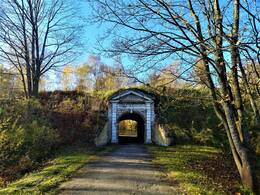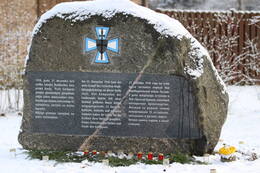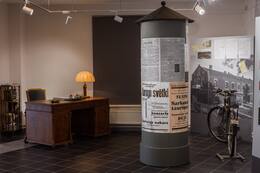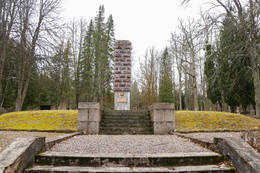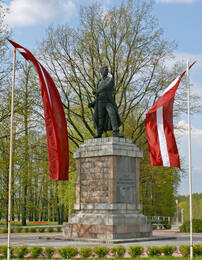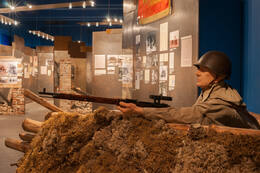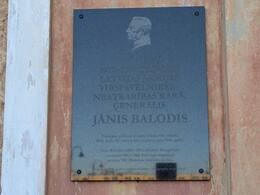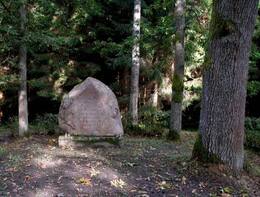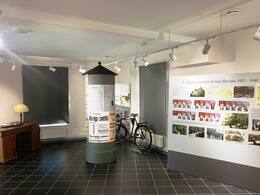Jānis Balodis (1881-1965), Latvijos kariuomenės vyriausiasis vadas, karo ministras generolas
I WW1, I Nepriklausomybės karai, II WW2, IV Sovietų okupacija

Jānis Balodis gimė 1881 m. vasario 20 d. „Vēženiekos“, Trikātos valsčiuje. 1898 metais baigęs Trikātos parapinę mokyklą, savo noru įstojo į rusų kariuomenę, tarnavo Kaune, Kamos 110-ajame pėstininkų pulke. 1902 metais baigęs Vilniaus junkerių mokyklą, J. Balodi buvo pakeltas į pulkininkus leitenantus ir paskirtas į 100-ąjį Ostrovos pėstininkų pulką. 1905 m. dalyvavo Rusijos ir Japonijos kare, o jam pasibaigus tęsė tarnybą 106-ajame Ufos pėstininkų pulke Vilniuje.
Per Pirmąjį pasaulinį karą, 1915 m. vasarį, kapitonas Jānis Balodis buvo sužeistas prie Gardino ir pateko į vokiečių nelaisvę. Grįžęs iš nelaisvės, J. Balodis 1918 m. gruodžio 1 d. savo noru įstojo į Latvijos laikinosios vyriausybės ginkluotąsias pajėgas ir tapo Karininkų atsargos kuopos (vėliau 1-osios Nepriklausomybės kuopos) vadu. Dalyvavo pirmuosiuose mūšiuose prie Lielautės, Skrundos, Ventos. 1919 02 28 už karinius nuopelnus pakeltas į pulkininkus leitenantus. Žuvus pulkininkui Oskarui Kalpakui, Jānis Balodis buvo paskirtas 1-ojo latvių atskirojo bataliono (vėliau brigados) vadu, o netrukus – 1919 m. kovo 21 d. – jam suteiktas pulkininko laipsnis.
Po Cėsių mūšio, kai 1919 m. liepos 6 d. Šiaurės Latvijos brigada įžengė į Rygą ir abi grupės susijungė į vieną tautinę kariuomenę, Balodis buvo paskirtas naujai suformuotos 1-osios Kuršo divizijos vadu, taigi ir Latvijos karinių dalinių Rytų fronte vadu. Šiose pareigose jis vykdė puolimo operacijas Latgaloje. 1919 m. spalio 16 d. paskirtas Latvijos kariuomenės vyriausiuoju vadu. Vadovaujant Jāniui Baložui, nedidelė Latvijos kariuomenė, remiama kaimyninių šalių, sumušė ir išvijo bermontininkus, paskui 1920 m. iš pradžių sumušė bolševikus Latgaloje. 1920 01 23 jam suteiktas generolo laipsnis. 1921 metų kovą Balodis buvo atleistas iš pareigų dėl jo likvidavimo ir kariuomenės perėjimo prie taikos meto etatų sąrašo. 1921 07 01 savo prašymu pasitraukė iš kariuomenės. Baigęs karinę karjerą generolas J. Balodis įsitraukė į politiką, 1925–1934 metais tapo Latvijos Respublikos Saeimos nariu. 1925 10 26 paskirtas Lāčplėsio karo ordino tarybos nariu.
Jānis Balodis buvo apdovanotas visomis trimis Lāčplėsio karo ordino klasėmis, taip pat daugybe užsienio apdovanojimų. Už nuopelnus valstybei jam kaip protėvių nuosavybė buvo suteiktas Baložių ūkis (buvęs Upesmuiža) Livbērzės valsčiuje.
1931 12 07 J. Balodis buvo paskirtas karo ministru. Jis aktyviai dalyvavo 1934 m. gegužės 15 d. perversme, kurį įvykdė Kārlis Ulmanis. Pagal 1936 m. kovo 12 d. įstatymą Balodis įstatymo numatytais atvejais buvo paskirtas Respublikos Prezidentu.
Sovietų okupacijos metais 1940 metų liepą buvo suimtas ir su žmona ištremtas į Syzraną, kur gyveno prižiūrimas saugumo institucijų. 1941 m., SSRS teritorijoje prasidėjus Antrajam pasauliniam karui, Balodis buvo suimtas ir paguldytas į Kuibyševo kalėjimą. 1946 m. buvo perkeltas į Ivanovo kalėjimą, o 1952 m. kovą – į Vladimiro kalėjimą.
Jānis Balodis 1956 m. buvo paleistas iš kalėjimo ir su žmona grįžo į Latviją. Gyveno Saulkrastuose, kur ir mirė 1965 08 08. Palaidotas Rygoje, I Mežos kapinėse.
Daugiau informacijos šaltinių
Erikas Jacobsonas. Jonas balandis. – Nacionalinė enciklopedija: https://enciklopedija.lv/skirklis/29969-J%C4%81nis-Balodis
Jonas balandis. Atminties sąsiuviniai. 1918–1939 m metai, komp. A. Caune, Latvijos istorijos instituto leidykla, Ryga, 2015 m.
Andris Caune. Generolas Jānis Balodis Rusijos tremtyje ir kalėjime, 1940–1960, Latvijos istorijos instituto leidykla, Ryga, 2016 m.
Paskutiniai generolo Jāņo Baložo gyvenimo metai Latvijoje, 1956–1965, amžininkų prisiminimai ir liudijimai, komp. A. Caune, Ryga, Latvijos istorijos instituto leidykla, 2014 m.
Lāčplėsio karo ordino kavalieriaus Janio Baložo biografija: http://lkok.com/detail1.asp?ID=2141
Susijusi laiko juosta
Susijusios vietos
Memorial places for generals and knights of the Lāčplēsis War Order in Trikāta Parish
The memorial stele is located next to the Trikāta cemetery chapel.
Trikāta Cemetery preserves the memory of three outstanding Latvian generals - Roberts Dambītis, Kārlis Goppers and Jānis Balodis. Jēkabs Mūrnieks, a teacher of all these generals, is also buried in Trikāta cemetery.
The generals and the knights of the Lāčplēsis Military Order are commemorated every year with torchlight processions to the Trikāta cemetery, where there are two memorial statues, in which the names of 17 knights of the Lāčplēsis Military Order associated with Trikāta parish are engraved.
Stela was opened on November 11, 2018.
Video story about the Lāčplēsis War Order and the set of orders that belonged to General Jānis Balodis.
Daugavgrīva Fortress
Daugavgrīva Fortress (entry from Birzes street) is located on the Daugavgrīva Island where Buļļupe river joins the Daugava river. The fortress was built in the 17th century to defend from enemies moving in the direction of Riga, which was an important administrative, trade and production centre. Later it became the main fortification of the Latvian Army coastal defence with several support points. This defensive fortification system is one of the most valuable objects of Latvia's military heritage. This fortress has witnessed Latvian military history. For example, during the Crimean War (1853-1856) Latvian and Estonian gunboat crews were trained here. The main objective of these units was to protect local ports and the coast from attacks by the British navy. During World War I Daugavgrīva militiamen companies were formed here. These were the first Latvian combat units, which came even before the Latvian Riflemen. Nowadays it is possible to see the territory of the fortress. ‘Komētforts’ and the Seaside Nature Park are located nearby and Mangaļsala fortifications are on the other side of the Daugava river.
Monument to the first battle for Latvia's independence
Atroadas, Inčukalns, Atmodas Street 2.
On July 3, 2016, a monument to the first battle for Latvia's independence, dedicated to the Latvian National Guard (Die Lettländische Landeswehr), was unveiled. sides. Eižens Upmanis, the chairman of the Brothers' Cemetery Committee, concluded at the time that this could be the historically first monument to the combined Latvian and Baltic forces in the battle memorials outside the cemetery. At that time, Lieutenant Colonel Oskars Kalpaks was appointed commander of the Latvian units of the Latvian National Guard or Landesver, from whose units the later Latvian army grew and formed during the Freedom Fights.
In 1918, the entire territory of present-day Latvia had fallen into the hands of the German Empire and its troops. However, at the end of the summer and autumn of 1918, the situation began to end badly for Germany, and it was clear that it was only a matter of time before Germany would be forced to concede defeat in World War I. The Russian Empire, which included Latvia before World War I, had ceased to exist earlier, with the revolutions of February and October 1917. On November 18, 1918, the Republic of Latvia was proclaimed. After the ceasefire with the Entente on November 11, 1918, the German army, which was on the territory of Latvia, was no longer motivated for further warfare, and most of its soldiers simply wanted to return home.
Under such circumstances, it was clear that Latvia's defense depended primarily on the national guard formed by the people of Latvia. Initially, due to their education and relatively greater ability to self-organize, the greatest initiative in creating such a national guard was shown by the Baltic Germans living in Latvia. Russian soldiers also joined the National Guard. In order to ensure the supply of the National Guard with uniforms, weapons and other necessary resources, on December 7, 1918, the Provisional Government of Latvia entered into an agreement with the German representative August Vinnig, providing for the provision of the National Guard from the German army reserves in Latvia. This agreement stated, among other things, that the National Guard, officially known as the Latvian National Guard or in German, the die Lettländische Landeswehr, would be the armed forces of the Republic of Latvia.
Two soldiers of the Latvian Red Rifle Regiment (ie approximately 2,000 to 3,000 soldiers) who had previously experienced in World War I and the Russian Civil War faced the Latvian National Guard. Despite the experience and numerical superiority of the Red Army, the Latvian National Guard held Inčukalns for two days in fierce fighting, until finally, in the evening of January 1, 1919, to avoid siege, was forced to retire, losing 43 dead and several wounded, most of whom was taken captive by the Bolsheviks, where they were killed or died of starvation or disease.
Author: Artis Buks. Material: Boulder. The monument is made of large monolithic stone, which was found in Rolls near Jelgava.
Exposition "Latvian Army in Pļaviņas in the 20th Century"
Located at Odzienas Street 2, Pļaviņas.
The permanent exposition "Latvian Army in Pļaviņas in the 20th Century" can be seen.
The building in Pļaviņas, Odzienas Street 2, has a long history - from the time when Stukmaņi wholesaler Hugo Apeltofts started active economic activity in it, thus promoting the development of Pļaviņas city, until the headquarters of the Latvian Eastern Front was established here during the War of Independence. In 1919, the activities of Latvian army units against the Red Army in Latgale were commanded directly from Pļaviņas.
In 1934, a memorial plaque was unveiled near this house with the inscription: "In 1919, the headquarters of the Eastern Front was located in this house, and here General Jānis Balodis took over the command of the Latvian National Army." It was removed and destroyed by the Soviets in 1940, but on June 16, 1990, with the support of the LNNK Plavinas branch, it was restored.
Now, next to the former headquarters building, there is a memorial stall dedicated to 15 cavalry of the Lāčplēsis Military Order born in Pļaviņas region. In Pļaviņas, as well as provides an insight into the life stories of the Knights of the Lāčplēsis War Order.
Not far from the exposition building is the Latgale Division headquarters building, which was built in 1913 by Count Teodors Medems as a Stukmaņi liqueur factory. In 1919 it was taken over by the regime of P. Stučka, where it had also established a prison. After the expulsion of the Bolsheviks, in 1925 the building was taken over by the Latvian Army, which housed the headquarters of the Latgale Division. 10 generals and other officers of the Latvian Army spent their military careers in this building. In 1940, the building was taken over by the Red Army. In the post-war years, it housed a school as well as a municipality. Around 1970, the building was started to be used by the production association "Rīgas Apīrsbs".
Visits to the exhibition must be booked in advance by calling T. 28442692.
Monument to the members of the Tirza parish who fell in the war of independence
Located in the Tirza Cemetery.
A monument with a lion's head is visible.
A monument made of broken boulder, designed by the architect Aleksandrs Birzeniekis and the sculptor Wilhelm Treys, commissioned by the Tirza Branch of the Brothers' Cemetery Committee, a monument to blacksmith Blumbergs. The monument was made with funds donated by members of the Tirza parish and the Brothers' Cemetery Committee. 2377 lats were donated to the monument fund. Opened on September 9, 1928.
The monument is made of massive granite blocks in the form of a rectangular column and leaves the impression of a symbol of strength and independence. The bronze parts and decorations of the monument were created by the sculptor Wilhelm Trejs. Material: granite, bronze, shape: architectural composition with copper forgings. On one side of the monument is the head of a bronze lion and a plaque with the inscription: "In this holy place the virtue of great men has created a long home." On the other side it is written: "For the eternal memory of the sons of the Tirzah congregation who fell in the war and in the war of independence. Anno 1928."
It is known that at the opening ceremony of the monument on September 9, 1928, it was consecrated by Archbishop Edgar Berg. The opening ceremony was also attended by the legendary General Jānis Balodis, who is an outstanding person in the history of Latvia. He was the commander-in-chief of the army in the battles against the Bermontians and the Red Army in Latgale. After the 1934 coup, he was the second person in the country and remained so after 1940.
In 2008, with the help of the Tirza Development Society, the monument was restored.
Monument to the fallen soldiers of the Latgale partisan regiment 1919 - 1920
A monument dedicated to the Latgale partisan regiment.
In the history of the War of Independence of Latvia (1919-1920), the Latgale partisan regiment, whose cradle was once in the territory of the former Balvi district, was formed from the "green" regiments already at the end of 1918.
The monument was opened for the first time on August 14, 1938, with the participation of General Jānis Balodis. The author of the monument is the artist Kārlis Jansons.
In 1940, the communists destroyed the monument, after the establishment of Soviet power, the executive committee of Abrene district decided to demolish the monument in the spring of 1941, but the image of the partisan was buried in the courtyard of the Balva militia. During the German era, the monument was restored, but when the Red Army returned, the monument was torn down a second time, taken away and destroyed. When Latvia regained its national independence, the people of Balveni collected donations for the restoration of the Latgale partisan monument. On November 11, 1993, the restored monument of Andrej Jansons, the son of the artist Kārļis Jansons, was unveiled at Balvos.
Latvian War Museum
The Latvian War Museum is located in the Old Town not far from the Freedom Monument in a historic defence building called the ‘Powder Tower’. There are 11 exhibits in the museum. There are various weapons, documents, uniforms, awards, badges and other items detailing the everyday life of a soldier in war. The Latvian War Museum is one of the oldest museums in Latvia. Its origins can be found in World War I. Museum’s collection was made up mainly of personal items of soldiers or items found on battlefields. After Latvia gained its independence the main goal of the museum became to create an exposition on the military history of Latvia and the active role of the population in protecting their land. In 1937 the museum was expanded and was technically one of the most modern museums in Europe at that time. The Powder Tower was one of the fortification towers of Riga. Some evidence dates back to 1330 where it has been mentioned as the ‘Sand Tower’. The tower was destroyed in 1621 when Riga was besieged by the Swedish Army. But in 1650 a new tower for storing gunpowder and weapons was built. After the city’s fortifications were taken down, the Powder Tower remains as one of the most important pieces of evidence of the Riga defence system.
Memorial plaque dedicated to the Commander-in-Chief of the Latvian Army Jānis Balodis
Located in Daugavpils Fortress, on the wall of the building, opposite the parking lot.
A memorial plaque says that the Commander-in-Chief of the Latvian Army during the War of Independence, General Jānis Balodis (1881-1965), lived in this house (there were officers' houses on Oficieru Street). The memorial plaque with the following text was unveiled in the interwar period – on September 29, 1936, when the Latvian Army was stationed in the Daugavpils Fortress.
It was removed after 1940, but was reinstalled in 2020 by the Daugavpils Heritage association.
Memorial stone at the battle site of General Jānis Baložs' brigade
The memorial stone at the site of the battle of General Jānis Baložs' brigade is located in the forest near the Riga - Liepāja (A9) highway, near the Batari house.
The memorial stone was unveiled in 1936 with a solemn ceremony attended by the then Minister of Transport B. Einbergs and other high-ranking Riga officials and the public of Džūkste parish, commemorating the battle that took place here on March 22, 1919. The inscription engraved on the monument reads: “Here, on March 22, 1919, the battle of the 1st Separate Baloži Brigade took place, in which 10 soldiers fell and 28 were wounded.”
The battle took place between the Separate Latvian Brigade and the 10th Soviet Latvian Rifle Regiment, which consisted of 90 percent Latvians. During the freedom struggle, it was one of those battles in which Latvians fought against Latvians. The Bolsheviks had established themselves in the Batari houses. They began to fire on the brigade soldiers who were heading in the direction of Kalnciems. As the fire intensified, the brigade deployed for battle. The main burden of the battle was borne by the Separate Student Company and the Latvian Independence Battalion. As the battle dragged on, a platoon of the student company and the newly formed company of Captain E. Graudiņš, while performing a bypass maneuver, collided in the forest with the enemy, who was performing a similar maneuver. In a fierce battle, which in some places turned into close combat, the enemy was defeated. At this time, the German Miller battery assigned to the brigade opened fire on the Batari houses. After artillery fire, the brigade drove the enemy from his positions in a swift attack.
The newspaper “Brīvā Zeme” (18.05. 1936) published the memories of a former fighter: “The brigade’s cavalry had just ridden out into the open, when they were met by heavy enemy fire. After that, it was clear that they were dealing with very strong enemy forces. The battalions, on the orders of General J. Baložis, deployed and began to fight, entering into close combat, as the bayonets of the brigade’s soldiers decided this two-hour battle into a brilliant victory for the Kalpakians. This battle was of great importance, because it leveled the situation on the front, which had become unsafe because of the Germans, and ensured that the Red Riflemen’s regiments no longer entered the Zemgale Plain.”
General J. Baložs' brigade won the battle, losing 10 soldiers, including Kārlis Barons (1900.8.III – 1919.22.III), the grandson of the father of the Dainas, Krišjānis Barons, who is buried in the Riga Brothers' Cemetery. 50 soldiers of the Soviet Latvian Riflemen Regiment fell in the battle.
Ekspozicija „Latvijos kariuomenė Pliaviniose XX a.“
Ekzpozicija, skirta Latvijos kariuomenės kūrimosi istorijai, yra Pliaviniose. Pastatas, kuriame ji įrengta, turi ilgą istoriją. Kai buvo pastatyta Stukmanių (dabar Pliavinių) geležinkelio stotis, visoje apylinkėje buvo pradėti statyti namai. Vienas jų, pastatytas 1900 m., buvo pirklio Hugo Apeltofto namas. Iš pradžių statytas kaip pirklių namas, vėliau tapo vieta, kur pradėta formuoti Latvijos kariuomenė. 1919 m. liepą, vykstant Nepriklausomybės karams, čia įsi kūrė Latvijos rytų fronto štabas. 1934 m. birželio 17 d. minint šį istorinį įvykį, ant pastato buvo atidengta atminimo lenta su įrašu: „Šiame name 1919 m. buvo įsikūręs Rytų fronto ka riuomenės vado štabas, ir iš čia Janis Baluodis vadovavo kaip Latvijos nacionalinės kariuomenės vadas.“ 1990 m. birželio 16 d. atminimo lenta buvo restauruota. 2019 m. bir želio 10 d. priešais buvusio štabo pastatą buvo pastatyta atminimo stela, skirta Pliavinių apylinkėje gimusiems kovo tojams, apdovanotiems Lačplėsio karo ordinu. Ekspozicijoje įrengti informaciniai stendai su istorinėmis nuotraukomis, žemėlapiais ir informacija apie Latvijos Rytų fronto štabo formavimąsi.
Susijusi istorija
Generolo Jāņo Baložo gyvenimas grįžus iš tremties
Kai 1940 metais rusai bandė iš Latvijos vyriausybės išspausti palankią karinės bazės sutartį, dėl kurios Latvijos kariuomenės galimybės pasipriešinti Raudonajai armijai būtų beveik neįmanomos, generolas J. Balodis bandė gauti kai kurias sutarties pataisas. Bet tai neveikia. Bet generolo niekintojai pasinaudoja šia aplinkybe, kad vėliau J.Balodžio vos nepaverstų išdaviku. Po konflikto su ministru pirmininku ir valstybės ministru K. Ulmaniu 1940 metų balandžio 5 dieną generolas buvo atleistas iš karo ministro posto. Tada J. Balodis nusprendžia dalyvauti Seimo rinkimuose iš Demokratinio bloko, bet nieko neišeina, nes rinkimuose leidžiama dalyvauti tik vienam sąrašui – komunistų kandidatų sąrašui. Latvija tampa 14-ąja sovietine respublika.
Oskarui Kalpakui atminti
Oskaro Kalpako atminimas saugomas daug kur – tai liudija jo gimtasis Liepsalu namas, paminklas Visagalos kapinėse, atminimo renginiai ir gražūs Kovo 6-osios koncertai, Meirānu Kalpako pagrindinė mokykla, gatvės Lubanoje, Madonoje ir kituose miestuose ir toliau. Bet šiame straipsnyje – apie Oskaro Kalpako atminimo išsaugojimą gimtinėje XX amžiaus 2–3 dešimtmetyje. metų.
Cėsių mūšio pradžia, eiga ir pabaiga
Pergalei Cėsių mūšyje buvo lemta tapti lūžiu latvių ir estų kovoje už savo šalies nepriklausomybę. Ši pergalė padarė tašką Andrievo Niedros vyriausybės ir vokiečių generolo Rüdigerio von der Goltzo planams užkariauti Baltijos šalis. Vietoj to Liepojoje savo veiklą atnaujino Laikinoji Latvijos vyriausybė, vadovaujama Kārlio Ulmanio.
Latvijos kariuomenės generolo, dukart Lāčplėsio karo ordino kavalieriaus Pēterio Radzinio atminimui.
Generolas Pēteris Radziņš gimė Lugažų valsčiuje, Valkos rajone, paprastoje ūkininko šeimoje, kur išmoko dirbti ūkio darbus. Jis buvo labai protingas jaunuolis, baigęs mokyklą apsisprendė kariauti ir taip pradėjo savo kariuomenės kelionę, gelbėdamas Latviją nuo Bermonto kariuomenės. P. Radziņš buvo vienas iškiliausių Latvijos kariuomenės karininkų, apdovanotas daugybe Latvijos ir užsienio ordinais bei atminimo medaliais.
Apie Sidabrinės kalvos atidarymo šventę
Ištrauka iš prisiminimų istorijos iš generolo Jāņo Baložo kalbos Sudrabkalninio paminklo atidengimo dieną. Visas tekstas yra atidarymo renginio atpasakojimas, prezidento Kārlio Ulmanio ir generolo Jāņo Baložo kalbos. Prisiminimai pasirinkti, nes juose vaizdingai matyti Sudrabkalnino apylinkėse kovojančios Latvijos kariuomenės būklė.
Kamuoliukų kalnas
Bumbų kalnas – aukšta kalva Bolderajos kopose, Kleistų miške, Rygoje. Latvijos laisvės kovų memorialas. 1919 m. lapkričio mėn. Bermontiados metu čia buvo Krišjānio Berkio vadovaujamos Latgalos divizijos vadavietė. 6. Rygos pėstininkų pulkas, puldamas nuo Bumbu kalno, užėmė Sidabrinį kalną. 1939 m. buvo įrengta atminimo lenta, kuri 1969 m. buvo sunaikinta. Memorialas atstatytas 1989 m.
Apie mažiau žinomus latvių skulptoriaus Kārlio Zāles kūrinius senosiose Dīvalos ir Trikātos kapinėse
Vienas iš mažai žinomų skulptoriaus Kārlis Zāle (1888-1942) kūrinių – travertino skulptūra „Nukritusios rožės“, sukurta 1939–1940 m., siejama su Brolių kapinių ansamblio kūrimu.









